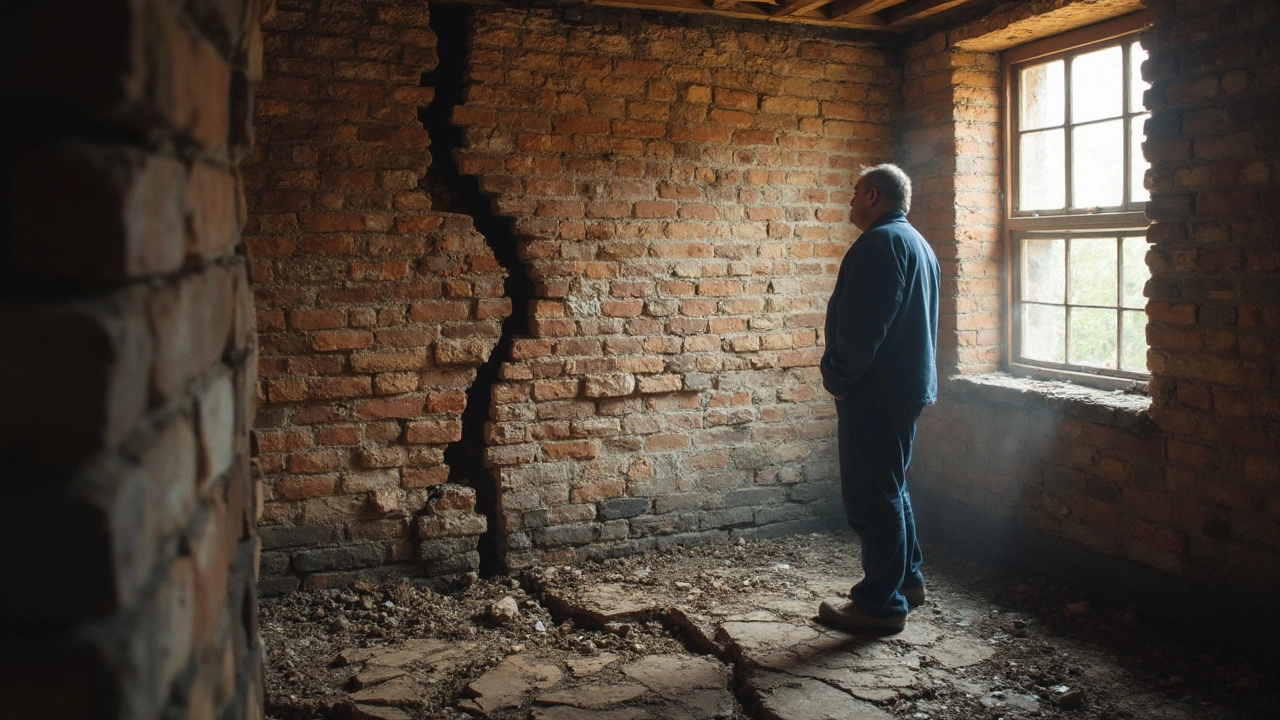Foundation Warning Signs: Spot Trouble Early and Save Your Home
Ever walked into a room and felt the floor wobble or noticed a crack that just won’t go away? Those are the first hints that your foundation might be crying out for help. Ignoring them can lead to costly repairs, so let’s break down the most common warning signs and what you can do right now.
Visible Cracks and Shifts
Cracks are the most obvious red flag. Look for horizontal cracks in walls or ceilings, especially near door frames. Stair‑step cracks that zig‑zag down the wall are a classic sign of foundation movement. If you see a crack wider than 1/4 inch that’s growing, it’s time to call a pro.
Don’t forget the foundation itself. Gaps between the slab and the wall, or any separation you can see from the outside, are serious. Even hair‑line cracks can indicate moisture problems that, over time, weaken the concrete.
Doors, Windows, and Floor Feel
Doors that stick, won’t latch, or slam shut on their own often point to a shifting base. Windows that become hard to open or develop gaps are also tell‑tale signs. Walk across each room; if the floor feels spongy or you hear a hollow sound, the joists might be out of sync with the foundation.
Uneven floors are another giveaway. Place a level on the surface; if it tilts more than a few degrees, you probably have a slope developing. In basements, watch for water pooling in corners or along walls—excess moisture eats away at support.
One quick test: close all doors and windows, then turn on a faucet in the kitchen. If you hear a sudden creak or see walls shift slightly, the foundation may be reacting to the water load.
What to Do When You Spot a Warning
First, document everything. Take photos of cracks with a ruler next to them, note the date, and track any changes weekly. This record helps contractors give you an accurate assessment.
Next, clear the area around the suspect spot. Remove any wallpaper, drywall, or floor covering to see the full crack length. If you feel comfortable, use a screwdriver to gently pry the crack open – just enough to see if it’s widening.
Finally, call a qualified foundation specialist. Look for companies with certifications, good reviews, and a clear warranty on their work. Many will offer a free inspection, which can save you from expensive guesses.
While you wait for the professional, you can do a few maintenance steps: keep gutters clean, ensure downspouts direct water away from the house, and maintain a consistent soil moisture level around the foundation. A soggy yard one season and a dry one the next creates expansion and contraction that pushes on the slab.
Remember, catching these warning signs early can turn a $10,000 repair into a $1,000 fix. Stay observant, act fast, and keep your home standing strong.
What Does a Bad Foundation Crack Look Like? Spot the Real Warning Signs
- Gavin Whitaker
- |
- |
- 0
Ever wondered if that crack in your basement wall means big trouble? This article covers what truly dangerous foundation cracks look like, how to tell them apart from harmless ones, and what steps to take next. We’ll break down common crack patterns, the red flags that spell structural risk, and simple tests you can do yourself. By the end, you’ll know what to watch for and when to call in a pro. Don't let a small crack turn into a money pit.
View more